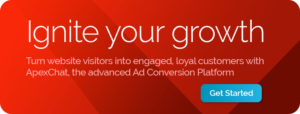10 KPIs for Lead Generation that You Should Be Tracking
KPIs, or key performance indicators, are important for businesses to track when evaluating success in achieving their goals. Some KPIs inform marketing budgets by determining cost per lead, while others, like bounce rate, showcase marketing vulnerabilities by determining the percentage of people who leave your website after viewing just one page. While all KPIs have their value, let’s focus on a couple from each part of the sales funnel and how they help you generate qualified leads.
Top-of-the-Funnel KPIs
People encountering your product for the first time are your top-of-the-sales-funnel audience. Also called the awareness or discovery stage, the top of the funnel is where your audience starts digging into your wares, searching for what they want or need. When you want to gauge how well you’re shepherding them with your marketing campaigns, consider these KPIs that showcase your effectiveness at grabbing attention.
| KPI Name | What It Means | Why It’s Important |
| Website/Social Media Traffic | This metric shows you how many people took a look around your website or saw your social media post. | This KPI demonstrates effectiveness at tempting customers and your content’s reach and visibility on marketing channels. |
| Click-Through Rate (CTR) | This metric shows you how many people clicked through a link or ad to visit your content via marketing campaigns. | This KPI tells you how well your content engages your audience and the interest they have in viewing more. |
Middle-of-Funnel KPIs
Called the consideration or interest stage, the middle of the funnel is where you create desire. The middle of the funnel is where you start nurturing your leads with content that’s helpful or valuable during marketing campaigns. If you’re working in sales, the middle of the funnel is where the selling starts by showing you care about customer pain points and demonstrating how your product or service can alleviate them.
| KPI Name | What It Means | Why It’s Important |
| Conversion Rates | This metric measures how customers engage with your content and perform desired actions. | This KPI shows how customers engage with your content, such as sharing posts and downloading content. |
| Lead Generation Cost | This metric measures the cost per lead pricing for your marketing campaigns during the sales process. | This KPI assesses how efficient and cost-effective your marketing campaigns are so you can better tweak your strategies. |
Bottom-of-Funnel KPIs
The bottom of the funnel is where the magic happens. Known as the conversion, decision or purchase stage, the bottom of the funnel is where you make the sale. The good news is they’ve gotten this far, so they obviously like your content. That means all you have to do here is give them a compelling reason to convert from a shopper to a customer.
| KPI Name | What It Means | Why It’s Important |
| Lead-to-Customer Conversion Rate | The metric measures how many qualified leads convert to customers who purchase your goods or services. | This KPI determines the quality of generated leads and the effectiveness of marketing campaigns. |
| Customer Acquisition Cost (CAC) | This metric measures how much converting each paying customer costs your company. | This KPI shows you the overall investment needed to get customers and your sales process’ financial health. |
Keep Reading: Cost Per Lead (CPL) vs Cost Per Acquisition (CPA)
Post-Purchase and Retention KPIs
Just because you get a sale once or convince a customer to download a demo doesn’t mean they plan on being your customer forever. In fact, you have to work hard in the post-purchase and retention stage to maintain good customer relationships. People are fickle and always looking for a better deal, so you should keep in touch and show you care after each sale.
| KPI Name | What It Means | Why It’s Important |
| Customer Retention Rate | This metric measures how many customers you retain over specific time periods. | This KPI shows you your success at creating customer loyalty and managing post-purchase customer service. |
| Net Promoter Score (NPS) | The metric measures how likely customers are to mention or recommend your brand to others. | This KPI hones in on customer loyalty and indicates the potential for referrals to family and friends. |
Across-the-Funnel KPIs
Also called measurement and analysis, the across-the-funnel stage is where you seek out ways to improve customer numbers and quality across every previous stage. The KPIs used here help marketing and sales teams glean major insights into the journey shoppers take to become customers so you can replicate and tweak the process.
| KPI Name | What the Metric Means | Why It’s Important |
| Return on Investment (ROI) | This metric measures the ratio between net profit and the cost of marketing and sales efforts. | This KPI assesses the profitability of your marketing campaigns and sales process strategies. |
| Customer Lifetime Value | This metric measures the revenue customers are likely to generate over their lifetimes. | This KPI informs businesses long-term strategies related to customer relationships. |
A comprehensive view of your sales funnel that includes KPIs at every step shows you what you’re doing correctly and what you need to change in your sales process. By understanding how to transition your audience from interest to conversion, you can create long-term customers and make impactful decisions that increase qualified lead generation and help your company’s bottom line.
Keep Reading: 5 Customer Service KPIs You Should Be Monitoring





Sorry, the comment form is closed at this time.